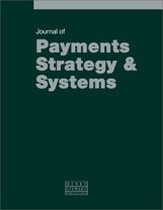Does India need a cheque truncation system?
Abstract
The Cheque Truncation System (CTS) helps ‘local clearing’ of ‘outstation cheques’, improves the efficiency of physical clearing and improves overall payment efficiency. While it was good when it was conceptualised in the last century, given that there are now other options such as ‘Payable at Par’ (PAP) cheques and the Speed clearing process, which helps ‘local clearing’ of ‘outstation cheques’, the point of discussion is whether it is relevant now. Also, electronic payment (EP) options are growing phenomenally in India, where EP by value are over 60 per cent of the total payment value for the year 2008–2009. This paper briefly explains PAP clearing and Speed clearing, analyses payments through paper-based and EP methods, looks at the statistics of PAP clearing and Speed clearing in three locations in India — including one locations where CTS is fully implemented — and identifies many options for moving physical payments to EP. Subsequently, based on the past trend, using statistical tools, the volume and growth of both paper-based payments and EPs in India are forecast for the next three years to conclude that, by the financial year 2012–2013, EP would contribute about 83 per cent by value and about 38.55 per cent by volume; only EP value is growing exponentially and all other items, ie cheque volume, EP volume and cheque value, are growing only in a linear fashion, and cheque volume is starting to decline. The paper concludes that CTS does indeed need a re-evaluation if the plan is to implement it in its current form.
The full article is available to subscribers to the journal.
Author's Biography
Mahadevan Balakrishnan is currently with the Payment System Development Group, World Bank, helping multiple developing nations improve their financial market infrastructure. Prior to that he was Chief Operating Officer of the National Payments Corporation of India (NPCI), responsible for Business, Operations and Technology. In that role he was involved in the creation of multiple retail payment infrastructures for the country, covering NFS ATM Network, the Immediate Payment System (IMPS), ACH, cheque truncation systems, the automation of 1000+ clearing houses in India with a standard solution, AADHAAR-based payment ecosystems for direct benefit transfer schemes, and the RUPAY domestic cards scheme, thus helping NPCI deliver its vision of simple, easy, convenient and cost-effective retail payment systems for all Indians. The systems he helped create in India facilitated the PMJDY financial inclusion schemes and the Direct Benefits Transfer to Bank Accounts schemes, saving India billions of Rupees. He has over 25 years of banking/technology leadership/ management experience with leading banks such as ABN AMRO Bank, Barclays and Citibank, and he was also involved in the implementation of some of the payment systems for these banks. He is a postgraduate in Business Administration (MBA) and in Bank Management (MBM), and has a Doctorate (PhD) in Financial Management/Payments. He has published several papers relating to payment systems in national and international journals.
